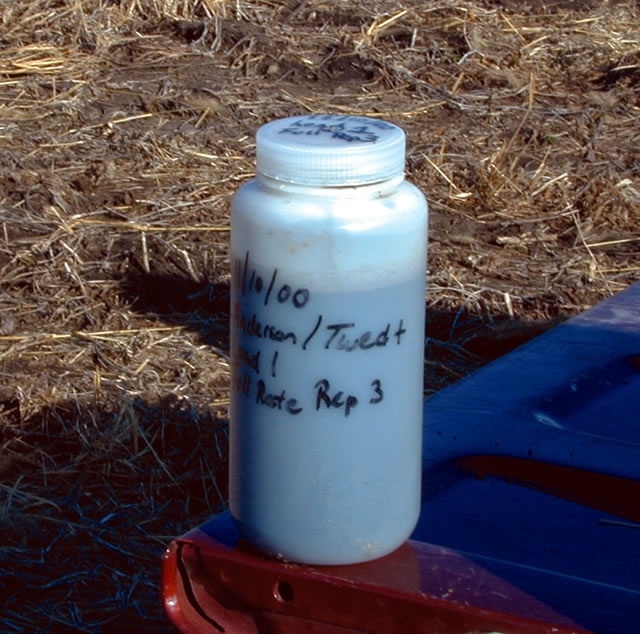
Features
Agronomy
Applications
Business/Policy
Research
Swine
United States
Got manure? Have it tested
February 22, 2013 by Christin Herbst University of Kentucky Extension
 An example of a liquid manure sample. Iowa State University
An example of a liquid manure sample. Iowa State UniversityFebruary 22, 2013 – Properly using manure as a fertilizer can be both economically and environmentally beneficial. However, nutrients in manure vary widely, and therefore it is important to have your manure tested before application.
Testing allows for accuracy in nutrient management specific to your crop needs and it minimizes water contamination caused by nutrient run-off or leaching.
To have manure tested, gather samples and bring them to the Carroll County Cooperative Extension office. Before samples are sent off, you will need to fill out some paperwork, similar to that of a soil sample. The cost is $25 per sample.
Once the completed paperwork and samples are in hand at the Extension office, we ship the samples to the University of Kentucky, College of Agriculture’s Division of Regulatory Service Soil Test Laboratory.
Results will be available in approximately one to two weeks. Upon return, I will interpret the analysis results and determine the appropriate application rates.
A sample must be sent for testing within 60 days prior to the date you plan to apply the manure since the nutrients can change with time. If you cannot deliver the sample to the Extension office on the day of collection, refrigerate or freeze that samples until you are able to deliver them.
Below are suggestions for collecting manure samples and preferred transport methods:
Poultry manure
- Gather manure samples from poultry litter before you clean out the poultry house.
- Collect 10 to 12 samples from different areas of the poultry house and put them all in one clean bucket.
- Mix the samples together and place the combined sample in a double one-quart resealable bag for shipping.
- Fill the container one-half to three-fourths full
Beef cattle manure
- Manure samples from cattle are gathered, combined, and transported in the same manner as for poultry.
Swine and dairy cattle manure
- Collect liquid manure from dairy or swine held in a lagoon several feet into the lagoon, and not from the edge.
- It can also be gathered as the lagoon is being emptied.
- Liquid samples should be placed in the plastic bottles provided by the Extension Office.
- Call me to acquire a bottle.
- Fill the container one-half full.
- It is very important to not fill these plastic bottles completely full as the manure produces gases that can cause the bottle to explode.
For maximum nutrient efficiency, it is important to apply the manure close to when the crop is planted. If you must use the manure in the fall, plant a cover crop to decrease the loss of nitrogen.